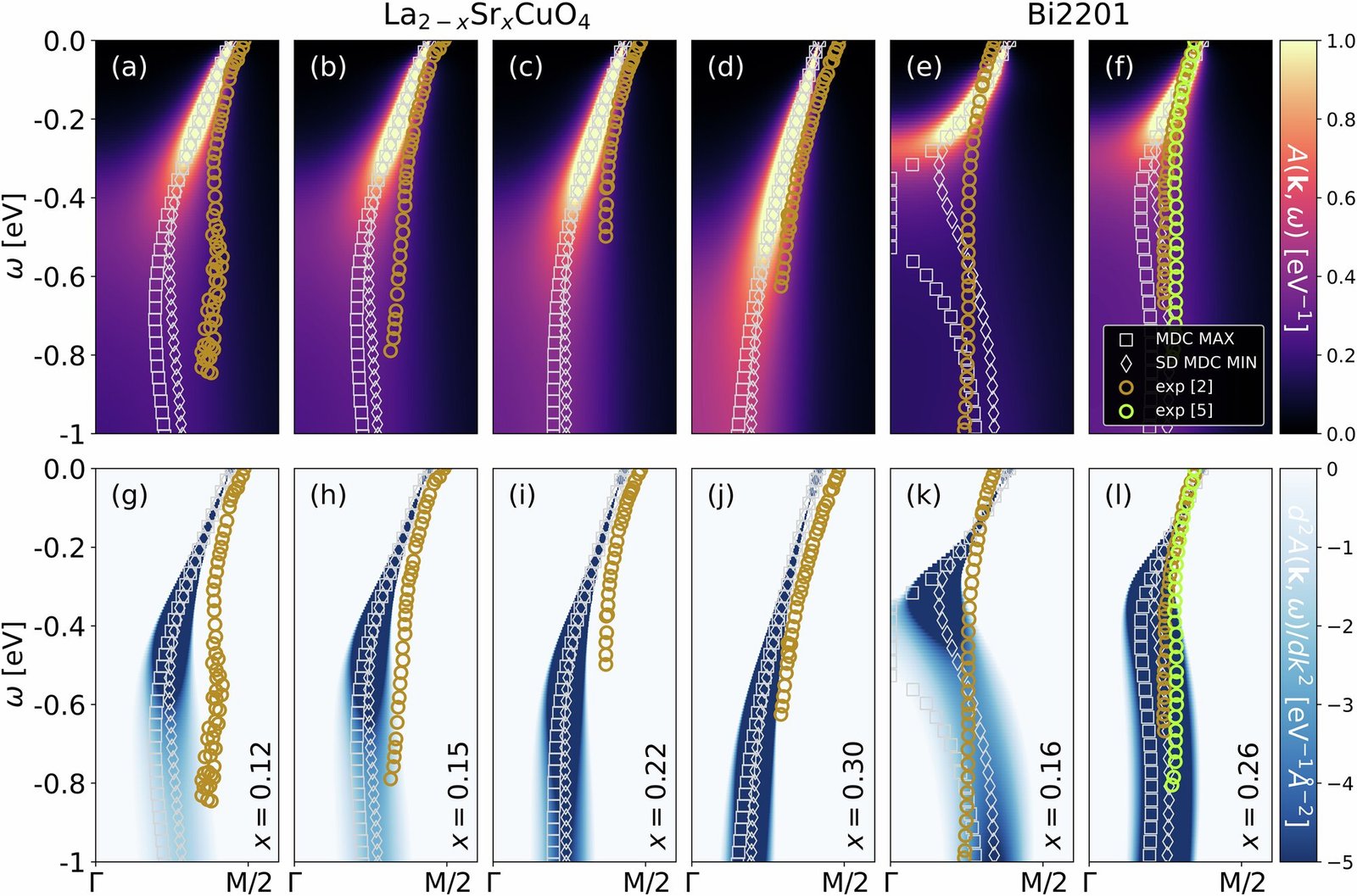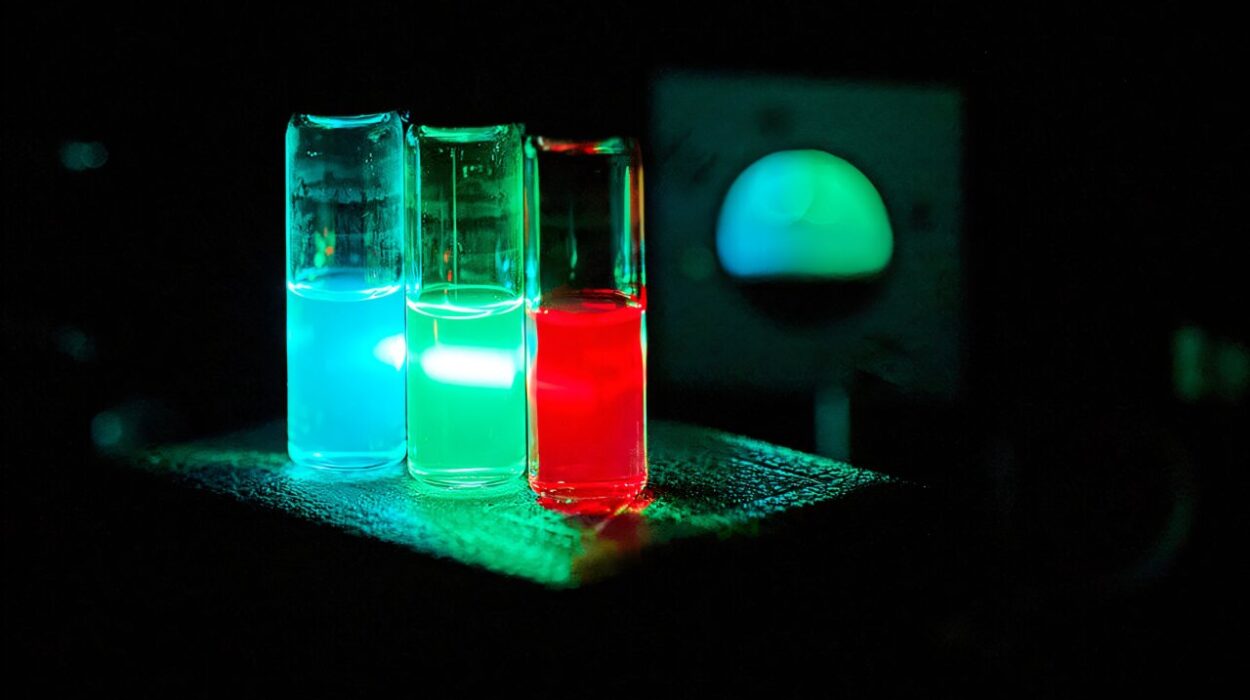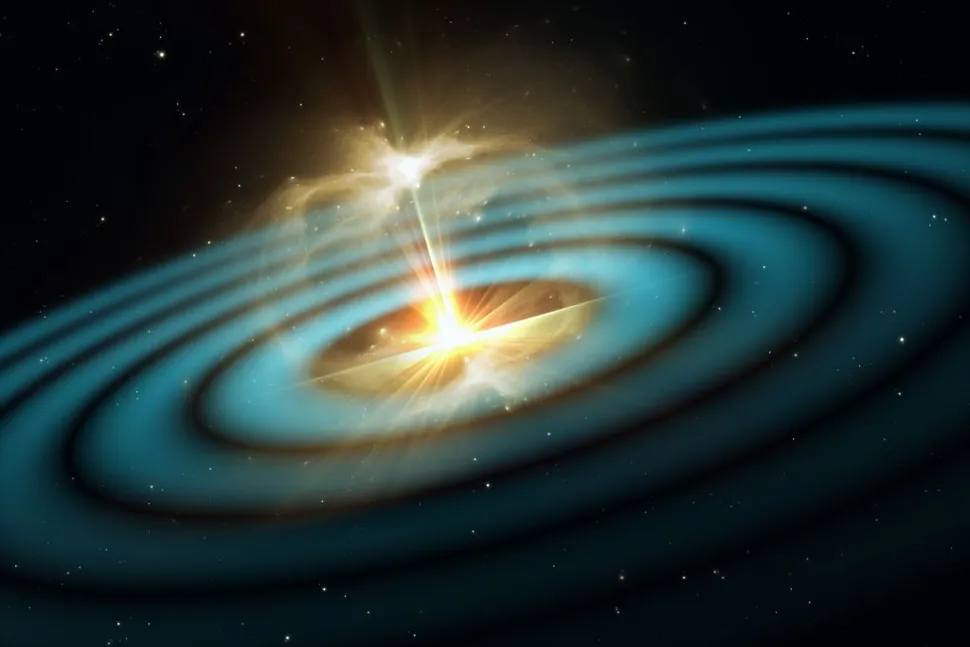Quantum mechanics, the realm of physics that governs the behavior of subatomic particles, often reveals surprising and counterintuitive phenomena. Among these is the concept of energy quantization, where certain physical quantities—such as the energy of electrons—are restricted to discrete values. This principle of quantum theory plays a pivotal role in shaping the properties of materials, especially in distinguishing conductive metals from insulating materials.
In a groundbreaking study led by researchers at TU Wien (Vienna University of Technology), a new quantum effect has been observed in materials, adding another fascinating chapter to the field of solid-state physics. The team has demonstrated the existence of an “umbilical cord” that links two energy bands when the electron interaction within a material is sufficiently strong. This finding has broad implications for understanding the behavior of materials that lie in between electrical conductors and insulators.
Understanding Quantum Energy Ranges in Solids
Quantum theory dictates that the energy levels of an electron in an atom are not continuous but quantized—meaning electrons can only possess specific values of energy. Anything in between these permissible values is forbidden, which leads to what is commonly known as a quantum jump: an electron can only move from one energy state to another, with no in-between values allowed.
For atoms, these quantum jumps translate into discrete energy levels, but things become a bit more intricate in the world of materials. In solids, where many atoms or molecules are packed together, electrons can’t just occupy one single energy level; instead, they are permitted to occupy certain energy ranges, known as energy bands. These ranges are crucial in determining how a material behaves when it interacts with external forces, such as electric fields.
In the simplest terms, the electrical properties of materials—whether they are insulators or conductors—depend heavily on how these energy bands are structured.
Insulators, Conductors, and the ‘Forbidden Gap’
In insulators, the structure of energy bands is such that two important bands—the valence band and the conduction band—are separated by a large forbidden energy range. This is known as a band gap, and it means that electrons are confined to the valence band, where they remain bound to their atoms, preventing them from conducting electric current. Because electrons cannot easily move into the conduction band, electric current cannot flow through the material.
Conversely, in metals, no such large band gap exists. Instead, the valence and conduction bands overlap, or the gap is small, allowing electrons to move freely from one band to another, and facilitating the flow of electricity.
Enter the ‘Umbilical Cord’: A New Transition Between Energy Ranges
But in some materials, things get much more complicated. A novel phenomenon was discovered in 2007 within certain copper-containing materials, known as cuprates—materials often studied for their high-temperature superconductivity. These materials exhibited an unexpected behavior: transitions between allowed energy ranges, even in cases where one might expect insulating properties.
The discovery of a new type of transition between energy bands suggested the existence of a new intermediate state—an energy range that was neither fully conductive nor fully insulating. This intermediate state would allow for new electron behavior that hadn’t been seen before, and researchers were left to wonder about the fundamental mechanisms behind it. Could this surprising feature appear in other materials? Was it a one-off or a broad principle of quantum physics in solids?
Now, in a study published in Nature Communications, researchers at TU Wien have found that this phenomenon, which they describe as an “umbilical cord,” is not some rare or exotic occurrence—rather, it appears to be a fundamental principle that arises in many materials when the electronic interaction strength is sufficiently high.
The Quantum ‘Umbilical Cord’: A Deep Dive
Prof. Karsten Held, a professor at the Institute of Solid State Physics at TU Wien, explains that this discovery provides a new way of looking at quantum energy states in materials. He elaborates:
“An electron moving around the nucleus of an atom can only assume very specific energy values. Everything in between is forbidden; it can only switch from one permitted energy value to another permitted energy value, which is known as a quantum jump.”
However, the story gets much more intricate when these quantum jumps are applied to electrons in solids. In these materials, not just specific energy levels, but entire energy ranges are permitted. An electron can assume a variety of momentum values, meaning its energy can shift within certain constraints, but it cannot arbitrarily leap between different energy bands unless additional energy is supplied.
But here’s where things get interesting: as certain material interactions are manipulated, the energy bands of a material can split into two separate bands. This, Held says, is what leads to the formation of the umbilical cord-like connection between them.
In this new state, when an energy range splits, the two newly formed bands remain intertwined through a kind of quantum “umbilical cord.” What’s remarkable about this is that at a specific momentum value, the electron is able to access a wide range of energies—and the lower and upper bands remain linked despite their apparent separation. This phenomenon challenges existing understanding about how energy bands relate in most materials.
At most momentum values, electrons are forced to reside exclusively in either the upper or the lower band, but the umbilical cord effect connects them for a particular momentum, allowing a broad set of energy values to exist within this new state.
Theoretical Foundations and Unexpected Discoveries
Despite the strange nature of this phenomenon, the results are far from accidental or anomalous. Held and his colleague Juraj Krsnik have shown that this umbilical cord effect is in fact an essential and inevitable feature in systems with strong electron interaction. Specifically, when the strength of the electron-electron interaction is carefully controlled or modulated, this intermediate state becomes the default mode of interaction between energy bands.
In fact, this is no isolated phenomenon: a similar occurrence in other complex systems, involving topological states, was awarded the Nobel Prize in Physics in 2016. These topological states, which describe the peculiar behavior of certain materials that exhibit unusual energy properties, have only recently been acknowledged as having valuable real-world applications. Therefore, the discovery at TU Wien pushes forward this broader class of exotic material states—creating a fresh avenue for research into materials with unique electrical, magnetic, and topological properties.
The Implications for Materials Science and Technology
The discovery of this umbilical cord effect provides us with a new lens through which we can understand solid-state materials, particularly those that lie between metals and insulators. This new intermediate state adds an exciting layer to the insulator-conductor transition, opening the door to new materials with potentially novel quantum properties.
Held notes, “We were able to show quite clearly that this umbilical cord-like connection must occur quite naturally when one energy band splits off from another. This opens up a whole new perspective on technologically highly interesting classes of materials and shows us that there is more to materials science between electrical conductors and insulators than previously thought.”
Beyond theoretical implications, this research could soon have practical applications in the field of materials engineering. By adjusting the strength of electron interactions and controlling the behavior of energy bands, researchers may be able to craft materials with highly tailored electrical properties. Such materials could revolutionize industries like semiconductor technology, quantum computing, and nanoelectronics.
Conclusion
Quantum mechanics continues to unveil new insights into the behavior of materials. With their discovery of the umbilical cord effect, Prof. Karsten Held and Juraj Krsnik have expanded our understanding of electron energy behavior, emphasizing that previously mysterious phenomena are in fact a natural consequence of specific electron interactions.
These findings not only enhance our fundamental knowledge of materials science but also open up fresh frontiers for future technological innovations. The surprising fact that electron interactions can create an intermediate state between conducting and insulating behaviors could provide the key to designing new materials with custom electrical properties, far beyond what conventional materials are capable of today. As researchers continue to explore the vast quantum world of materials, it becomes increasingly clear that there is still so much to discover.
Reference: Juraj Krsnik et al, Local correlations necessitate waterfalls as a connection between quasiparticle band and developing Hubbard bands, Nature Communications (2025). DOI: 10.1038/s41467-024-55465-7





